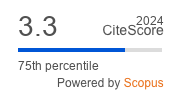Article | Open Access
Extreme Risk Makes the Journey Feasible: Decision-Making amongst Migrants in the Horn of Africa
| Views: | 4219 | | | Downloads: | 2654 |
Abstract: This article explores how some potential migrants in the Horn of Africa incorporate the prospects of extreme danger into their journeys. It draws on evidence from qualitative interviews and focus group discussions with over 400 respondents, mainly from Ethiopian and Somali communities. It shows that the risks of migration within the Horn of Africa are often well known, thanks to strong migrant networks and improved mobile communications. Indeed, migrants may be better informed of the risks of the journey than they are about their prospects of securing a good living upon arrival. However, rather than discouraging people’s migration, high risk may open up new possibilities. This article supports this argument with two examples. First, as Yemen descended into civil war, the breakdown of state control created new opportunities to move undetected, notwithstanding the threat of injury and death. This helps explain why the number of Ethiopians passing through Yemen increased with the conflict, contrary to expectations. Second, some young Somalis are soliciting the services of smugglers to help them move towards Europe, knowing that they are likely to be abused and held for ransom en route. They gamble on their captors’ demands being met by family members, who would not otherwise have endorsed or paid for their journey. These findings challenge common assumptions about risk and decision-making, and suggests that some migrants may move because of, rather than in spite of, the risks involved. It also calls into question initiatives that seek to deter migration by raising awareness about the risks of the journey.
Keywords: Ethiopia; human smuggling; information; migration control; risk; Somalia; Yemen
Published:
© Oliver Bakewell, Caitlin Sturridge. This is an open access article distributed under the terms of the Creative Commons Attribution 4.0 license (http://creativecommons.org/licenses/by/4.0), which permits any use, distribution, and reproduction of the work without further permission provided the original author(s) and source are credited.


